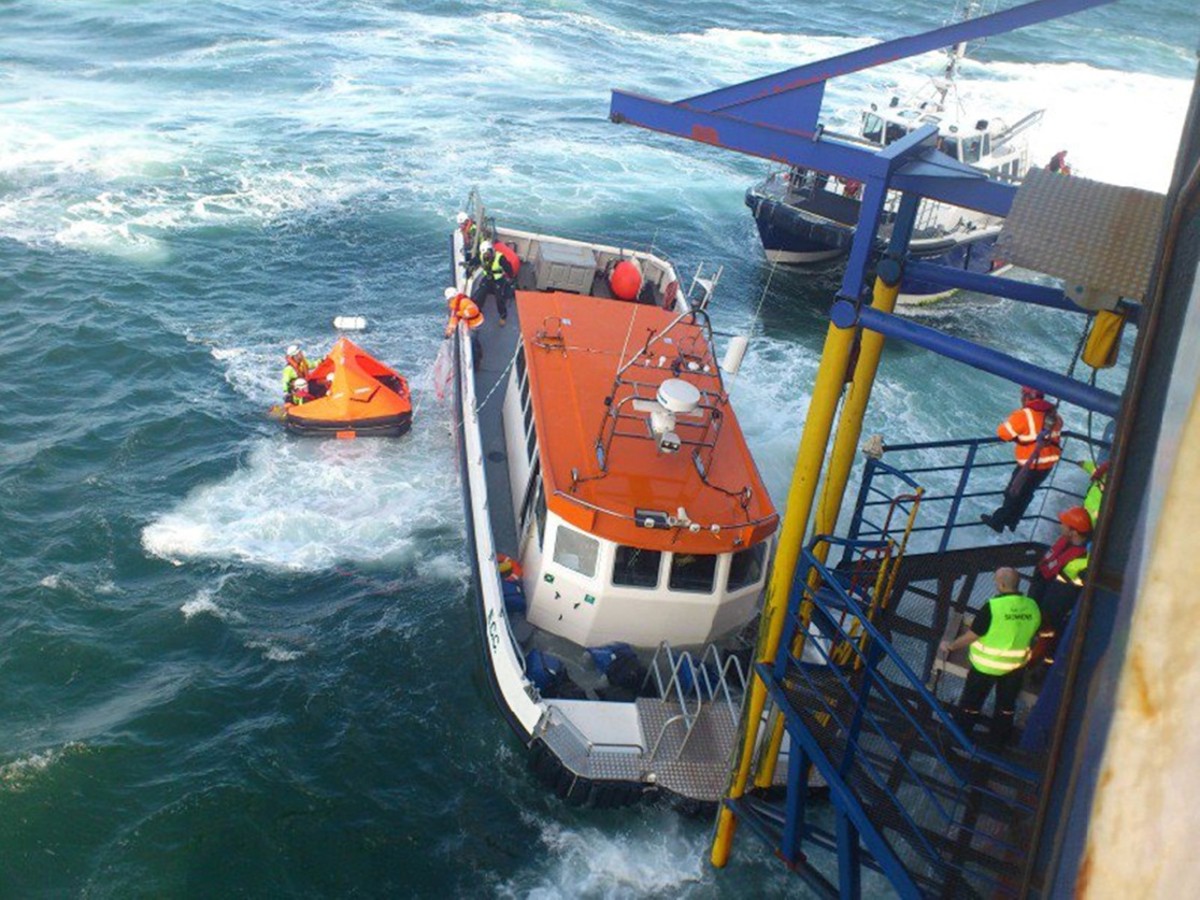Crew transfer vessel trapped under a boat landing
- Safety Flash
- Published on 3 May 2013
- Generated on 4 July 2025
- IMCA SF 06/13
- 2 minute read
Jump to:
A Member has reported an incident in which a crew transfer vessel became trapped when the bottom section of a boat landing fixed to an offshore accommodation vessel gave way.
What happened
The master of the crew transfer vessel was not able to manoeuvre the vessel free under own power, and the vessel was eventually pulled clear by another crew transfer vessel. Some of the passengers launched liferafts and abandoned ship without any obvious instructions from the crew of the transfer vessel.
Personnel were in a liferaft adjacent to the vessel when it was pulled clear and could have been run down. One liferaft was launched incorrectly and did not inflate. The boat landing was damaged, and there was minor damage inflicted to the bow of the crew transfer vessel.
One member of the transfer vessel crew suffered minor bruising.

crew transfer vessel shown trapped
What where the causes?
During the investigation a number of immediate causes were noted, including:
- defects or failures in design of equipment (the boat landing and the bow of the crew transfer vessel)
- inadequate risk assessment or consideration of the deteriorating weather and sea state
- unexpected relative motion between the crew transfer vessel and the accommodation vessel
- the trim and draft of the accommodation vessel.
The underlying causes were found to be:
- inadequate structural integrity of the boat landing - inadequate design
- existing work procedures not adequate to the work in hand
- the bow height of the crew transfer vessel.
- inadequate communication.
Actions
Actions identified include:
- Repair, redesign and subsequent extension of boat landing system.
- Use of fall arrest equipment when transferring from crew transfer boat to accommodation vessel.
- Ensure life-rafts are properly attached to vessels.
- Development of more adequate procedures and detailed risk assessment for this method of crew transfer.
IMCA Safety Flashes summarise key safety matters and incidents, allowing lessons to be more easily learnt for the benefit of the entire offshore industry.
The effectiveness of the IMCA Safety Flash system depends on the industry sharing information and so avoiding repeat incidents. Incidents are classified according to IOGP's Life Saving Rules.
All information is anonymised or sanitised, as appropriate, and warnings for graphic content included where possible.
IMCA makes every effort to ensure both the accuracy and reliability of the information shared, but is not be liable for any guidance and/or recommendation and/or statement herein contained.
The information contained in this document does not fulfil or replace any individual's or Member's legal, regulatory or other duties or obligations in respect of their operations. Individuals and Members remain solely responsible for the safe, lawful and proper conduct of their operations.
Share your safety incidents with IMCA online. Sign-up to receive Safety Flashes straight to your email.